Finishing up the new electronics workbench build.
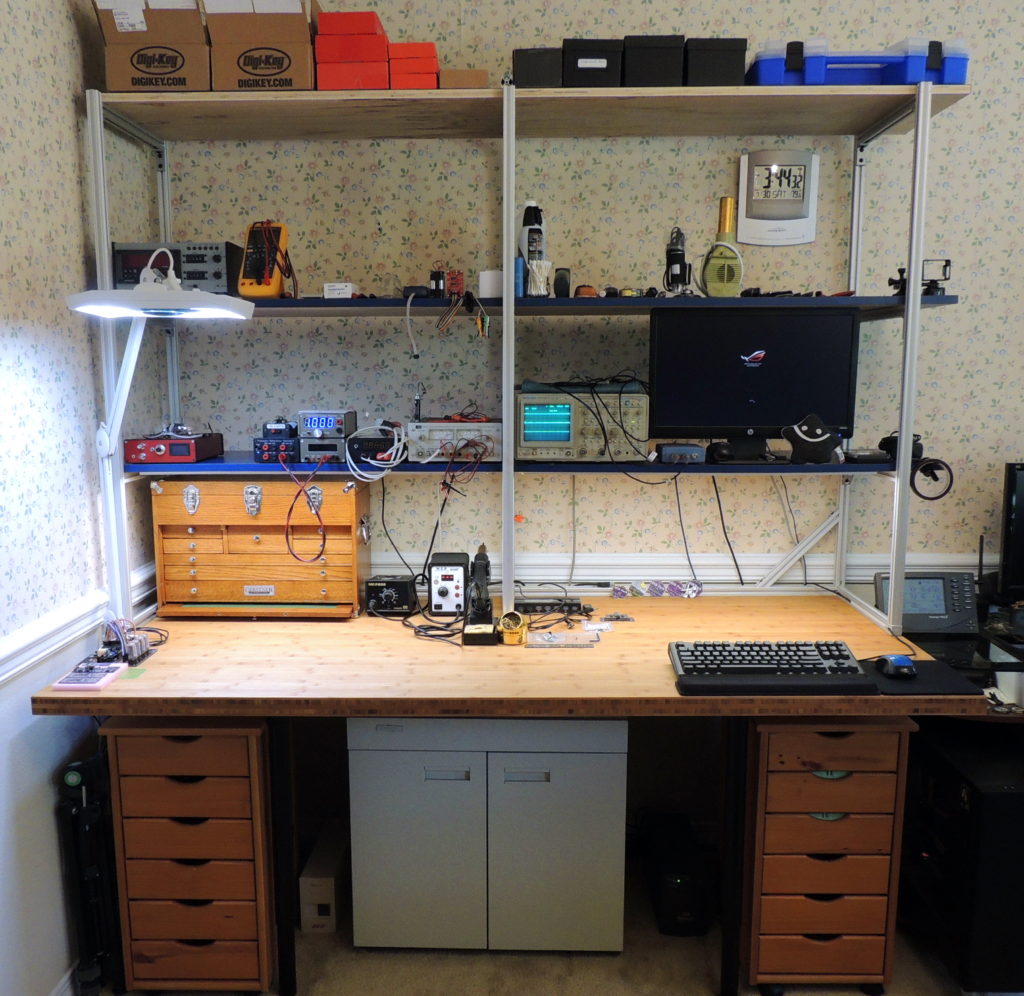
Continue reading “New electronics workbench build part 2”
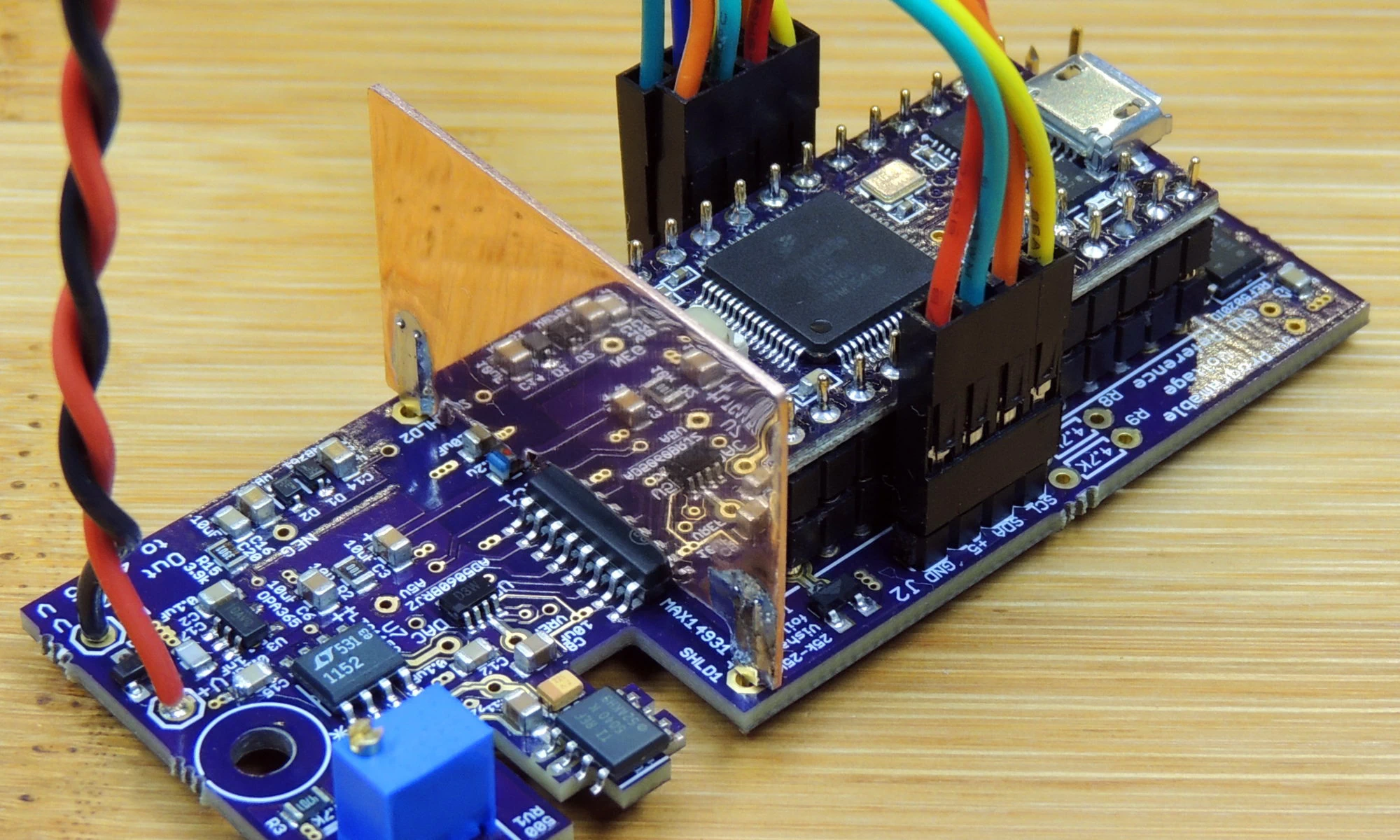

Restoring vintage electronics along with designing and building new circuits. One eye looking into the past, the other looking into the future.
Finishing up the new electronics workbench build.

Continue reading “New electronics workbench build part 2”
Finishing up the Programmable Voltage Reference project …

Continue reading “Programmable Voltage Reference V2.12 Completion…”
Assembling the V2.12 Programmable Voltage Reference Board.
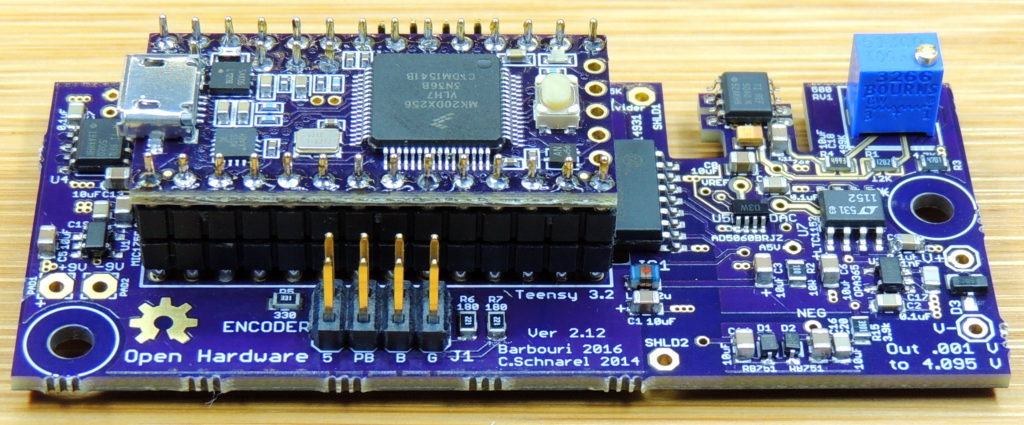
Continue reading “Programmable Voltage Reference V2.12 Assembly”
I just received the version 2.12 bare circuit boards from OSH Park
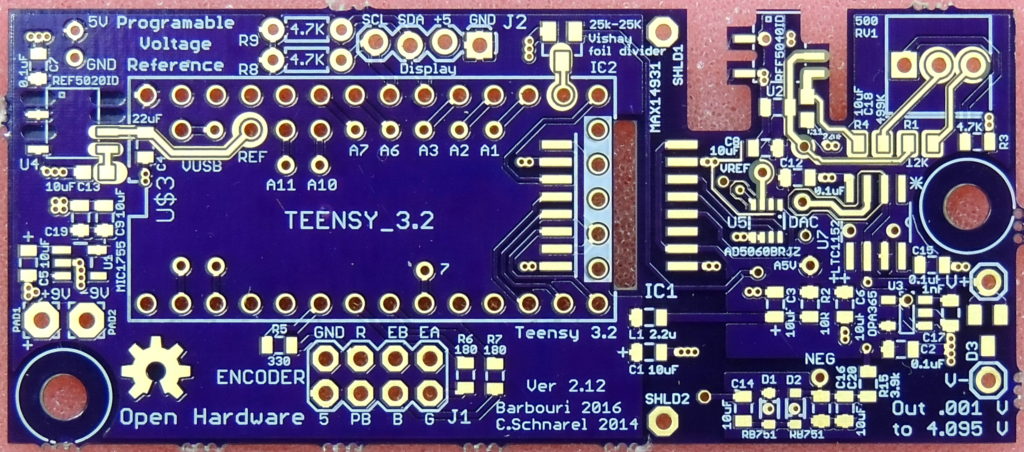
Continue reading “Version 2.12 of the Programable Voltage Reference”
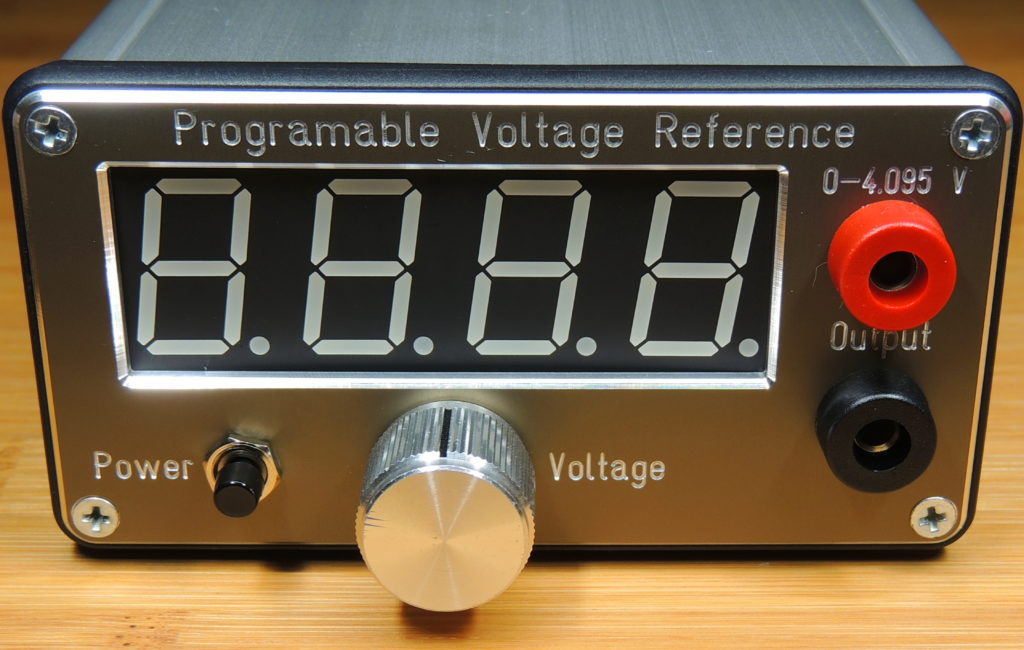
While waiting on the version 2.12 printed circuit boards from OSH Park, I decided to do some work on the case.
Continue reading “Programmable Voltage Reference Case”
A precision programmable voltage reference circuit capable of 0.001 to 4.095 volt output in 1 mV steps with an accuracy of 100 uV.

This project is based on a circuit designed by uChip and presented in the Sparkfun forum. There is a Github page for the original design. Continue reading “Programmable Voltage Reference Project”
Replacing the old particleboard desktop with a new bamboo countertop and adjustable leg workbench.
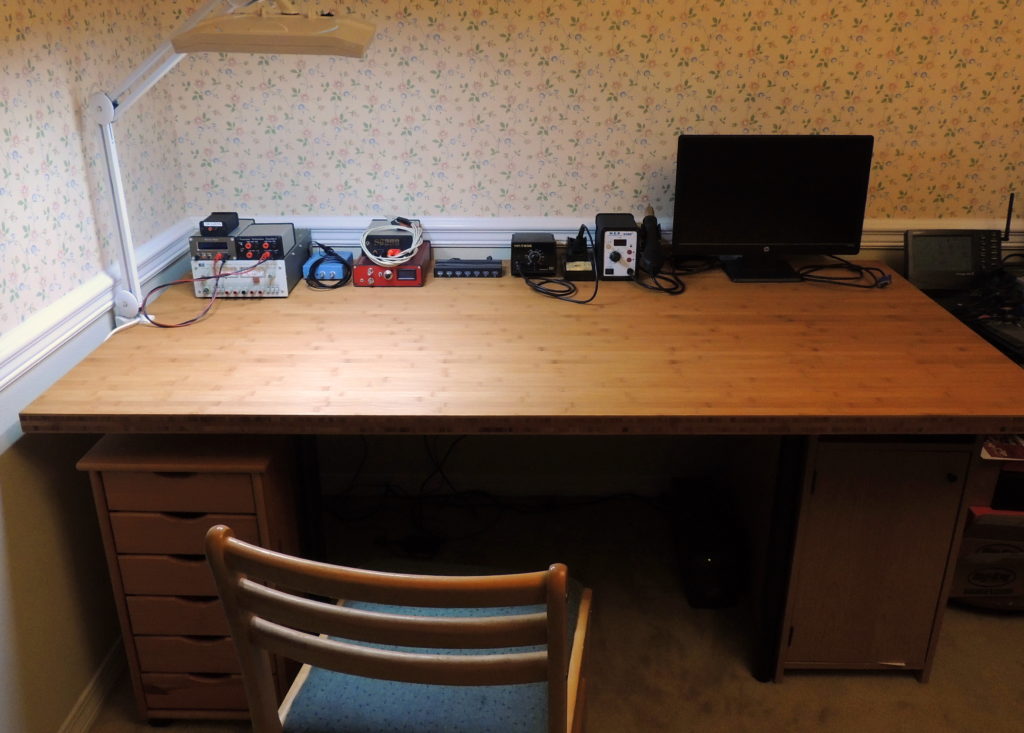
I had quickly run out of room for all my test equipment on my original desktop table that I used for electronics work. Leaving me around 1.5 sq/ft of usable area for my projects.
With the winning of an Ebay bid for a vintage Tektronix digital oscilloscope, I was out of room. Continue reading “New electronics workbench build”
The Open EVSE project includes hardware and software for charging electric vehicles and plug-in hybrids using the J1772 standard. A current DIY Open EVSE V4.23 completed board
A current DIY Open EVSE V4.23 completed board
I started working with the Open EVSE project back in 2011 when I leased my first Nissan Leaf electric car. Chris Howell had started a post on the “My Nissan Leaf” forum and built a few prototype boards to test. Then Lincomatic began working on software and things began to really pick up speed. Chris made the DIY Open EVSE open source on 27 October 2011, and the first boards started shipping in late December.
Unfortunately there was a long waiting list to get the boards, so I decided to make one for myself using the EagleCAD files provided from Chris.
A quick and easy project to mount a precision 10K ohm resistor for use as a reference standard.
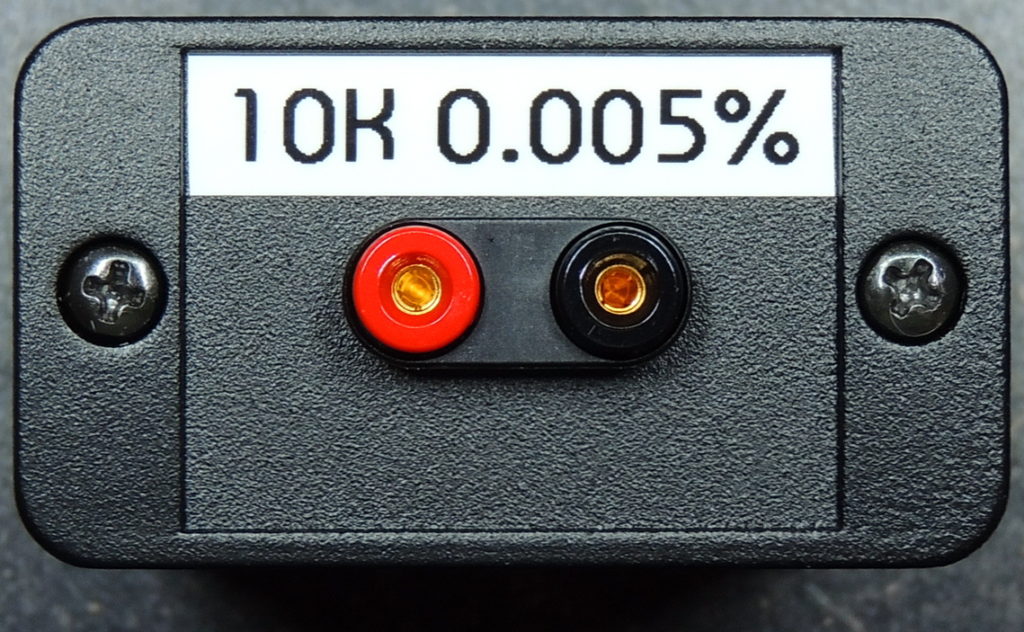 10K resistor enclosure front panel
10K resistor enclosure front panel
To go along with my Quad precision voltage reference I wanted to add an accurate resistance reference to my bench equipment.
I decided on a 10K ohm precision resistor from Vishay Foil Resistors.
The resistor is a Z series ultra high precision Z‑Foil though-hole resistor with a TCR of ± 0.05 ppm/°C, Tolerance of ± 0.005 % (50 ppm), Load Life Stability of ± 0.005 %, and rated at 0.6 Watts.

After seeing several other voltage reference projects online and many more assembled boards on Ebay, I decided to put together my own version of a multi-output module that I could use for prototyping ADC, and other projects.
I needed at least a 2.048 volt and a 4.096 volt precision reference. An extremely high accuracy 5.000 volt reference was also on my list. I already had an enclosure on hand that I wanted to use, but in my early mock ups the three outputs on the front panel just didn’t look right. So for good measure a 2.500 volt reference was added to the project.
The 4.096 volt and lower reference IC’s only required a stable 5 volt supply, but the 5.000 volt reference IC required a minimum of 9 volts and preferably 10 volts for maximum stability. So a separate add-on board was designed to supply 9 or 10 volts along with a warm-up timer and battery low voltage alert.
 The Milliohm Meter Project
The Milliohm Meter ProjectI built this milliohm meter several months ago which is based on a project by Scullcom Hobby Electronics and presented on YouTube.
Louis at Scullcom Hobby Electronics has a new video updating the milliohm meter, and features the board I produced in this post.
NEW Link to updated video on YouTube
NEW Version 1.5 board available at OSH Park requires additional 0.01 uF ceramic capacitor, 2 pin header, and 250 mA PTC fuse.
NEW Updated project post with Milliohm Meter version 1.5 board.
It uses a 4 wire kelvin measurement system that supplies a precise 100 mA current to the device under test using one pair of leads, and then measures the voltage drop across the device under test using a second pair of leads.
As designed it can be used to measure low resistances of under 2 ohms (Ω). Some of the design changes I made to fit my needs were:
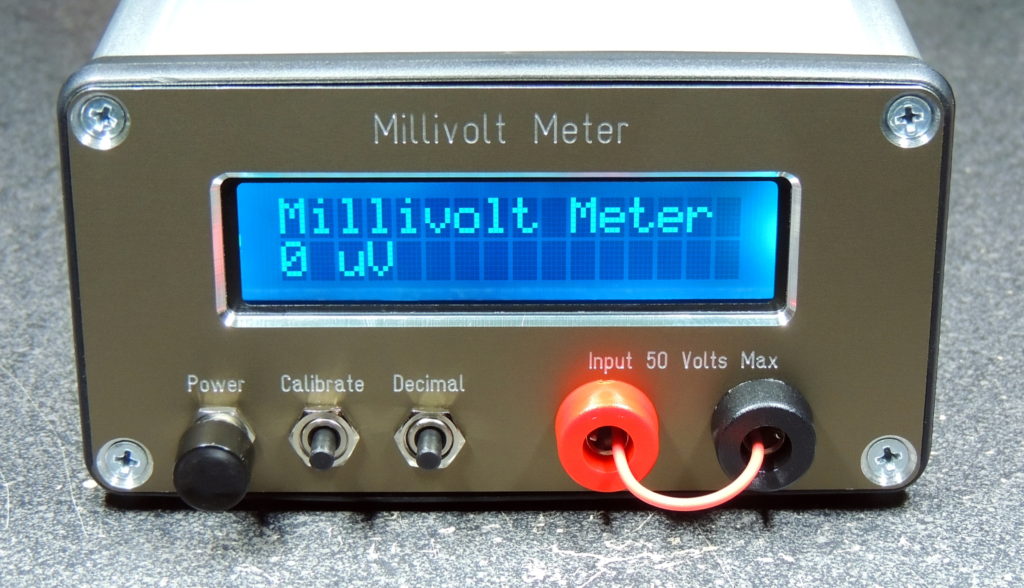
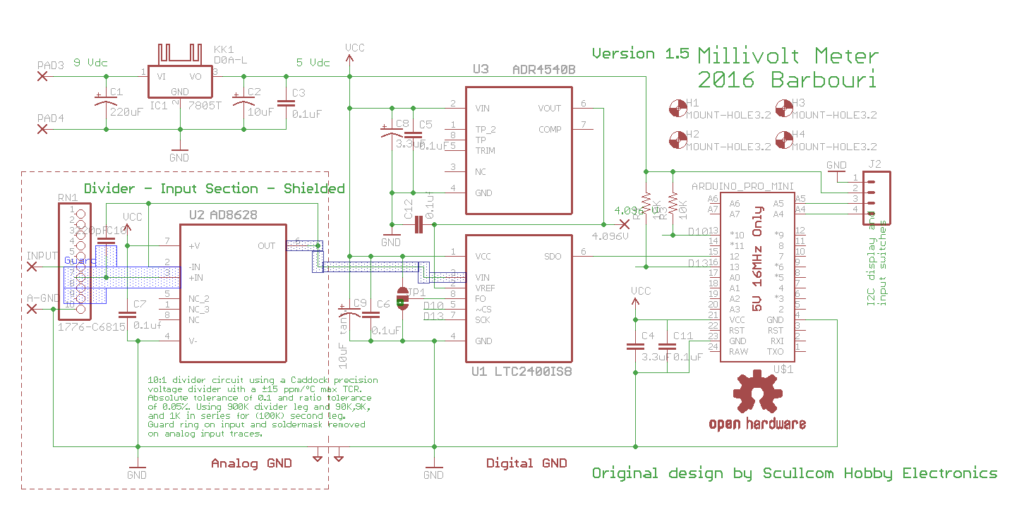
This is a DIY millivolt meter that was originally designed by
Scullcom Hobby Electronics and presented on Youtube.
Definitely take the time to watch the videos (4 parts) as they are very well done and presented in a way that’s easy to follow and learn from.
I was in need of a meter that I could dedicate to low voltage precision readings, and could be done for a reasonable cost. So this project seemed like a perfect fit. As usual after viewing the video I saw many areas that the meter could be modified and improved for my specific use, and quickly began designing my own version of it using Eagle CAD V7.5.
Continue reading “Millivolt Meter”